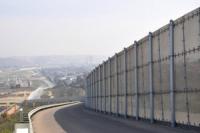-
Novel solution to better secure voice over internet communication
Researchers have developed a novel method to better protect Crypto Phones from eavesdropping and other forms of man-in-the-middle attacks. Crypto Phones consist of smartphone apps, mobile devices, personal computer or web-based Voice over Internet Protocol applications that use end-to-end encryption to ensure that only the user and the person they are communicating with can read what is sent. In order to secure what is being communicated, Crypto Phones require users to perform authentication tasks.
-
-
Improving military communications with digital phased-arrays at millimeter wave
There is increasing interest in making broader use of the millimeter wave frequency band for communications on small mobile platforms where narrow antenna beams from small radiating apertures provide enhanced communication security. Today’s millimeter wave systems, however, are not user friendly and are designed to be platform specific, lacking interoperability and are thus reserved for only the most complex platforms. New program aims to create multi-beam, digital phased-array technology, operating at 18-50 GHz to enhance secure communications between military platforms.
-
-
A custom-fit app for community policing
Apps allowing citizens to report crimes or incidents are now commonplace, but they generally fail to adapt local contexts, cultures and sensibilities. SecureU, a new app that addresses this shortcoming, is currently being tested in five European cities.
-
-
2017 Critical Incident Exercise put first responder technologies to the test
In the wee hours of 29 October 2017, more than 200 people participated in a critical incident exercise and technology assessment, conducted by DHS S&T and partner organizations. The exercise took place at the Grand Central Terminal in New York City, with most of the action occurring on parked trains and on track platforms, and other indoor spaces within the Terminal. Emergency medical technicians were dispatched to quickly convert ramps in front of several track platforms into triage stations. Outside, first responders set up an incident command post and an operations center to coordinate the simulated response.
-
-
Disasters are destroying places we hold dear. What we do next will make all the difference.
When fires, floods and other major disruptions alter natural areas, our first instinct is to restore what’s lost. But moving forward may mean leaving some treasured things behind. On 2 September 2017, a wildfire ignited in the Columbia River Gorge about 40 miles east of Portland, Oregon. Quickly, flames spread across the canyon’s south side and ascended the surrounding cliffs, where dry east winds blew them into an inferno. Within three days the Eagle Creek Fire had enveloped more than 20,000 acres and jumped the river to the north rim. With smoke still choking its skies, the community plunged into a debate over how it should respond to this profound loss: try to reconstruct the past, or accept a new reality? Inhabitants of a dynamic world have grappled with this question for eons, but today and in a future where climate change is quickly destabilizing our environments, the changes are becoming more frequent and more consequential. More than ever, policy-makers and land managers are needing to make tough choices about humankind’s role in managing the natural world. Biologist Johanna Varner does not intend to encourage complacency about disasters that arise as a result of human activity, but she points out that our new reality is likely to be a time of great loss, and how we choose to respond to those losses will make a big difference. In the Columbia River Gorge or elsewhere, whether we re-create what goes missing, build something new or leave it alone entirely, our decisions will seed the future.
-
-
Climate stress puts nearly half of California's vegetation at risk
Current levels of greenhouse gas emissions are putting nearly half of California’s natural vegetation at risk from climate stress, with transformative implications for the state’s landscape and the people and animals that depend on it, according to a new study. Cutting emissions so that global temperatures increase by no more than 2 degrees Celsius (3.2 degrees Fahrenheit) could reduce those impacts by half, with about a quarter of the state’s natural vegetation affected.
-
-
Making network-connected systems less vulnerable
The rise of network-connected systems that are becoming embedded seemingly everywhere–from industrial control systems to aircraft avionics–is opening up a host of rich technical capabilities in deployed systems. Even so, as the collective technology project underlying this massive deployment of connectivity unfolds, more consumer, industrial, and military players are turning to inexpensive, commodity off-the-shelf (COTS) devices with general-purpose designs applicable for a range of functionalities and deployment options. While less costly and more flexible, commodity components are inherently less secure than the single-purpose, custom devices they are replacing. DARPA says it trains its sights on the expansive attack surface of commodity off-the-shelf devices.
-
-
$1 billion reward proposed for development of new antibiotics
An international group tasked with researching and developing new economic models to promote antibiotic development is calling for a $1 billion market entry reward for new antibiotics, saying the reward could significantly boost the number of new antibiotics coming to market over the next thirty years. The proposal was made by an international consortium of public health organizations, academic institutions, and pharmaceutical companies supported by the European Medicines Initiative. The $1 billion market entry reward is one of four incentives proposed by the group to stimulate research and development (R&D) for new antibiotics and ensure that critically needed antibiotics are used sustainably and continue to be accessible. “Without incentives, some scientifically promising treatments would probably never make it to patients,” says one expert.
-
-
Synthetic virus tackles antimicrobial resistance
Antibiotic resistance has become an ever-growing global challenge, with more than 700,000 people across the world dying from drug resistant infections every year. As a result, antibiotic discovery has fallen well behind its historical rate, with traditional discovery methods being exhausted. Scientists have engineered a brand new artificial virus that kills bacteria on first contact. This new virus is built using the same geometric principles that determine structures of naturally occurring viruses, known as polyhedral capsids.
-
-
Making production of high explosives cheaper, safer
Scientists from the U.S. Army Research Laboratory (ARL) and the Lawrence Livermore National Laboratory found a solution to a significant challenge in making high-energy explosives. They safely improved the overall chemical yield derived from diaminoglyoxime, known as DAG, and significantly increased the amount of material made per reaction.
-
-
Unless carbon emissions are reversed, global temperature targets will be missed soon
New scientific projections could be the catalyst the world has sought to determine how best to meet its obligations to reduce carbon emissions and better manage global warming as defined by the Paris Agreement. A new study projects that if immediate action isn’t taken, the earth’s global average temperature is likely to rise to 1.5°C above the period before the industrial revolution within the next 17-18 years, and to 2.0°C in 35-41 years respectively if the carbon emission rate remains at its present-day value.
-
-
Step-by-step horsepox study intensifies dual-use research debate
The publication last week of a research paper offering a manual for re-creating an orthopoxvirus has been harshly criticized by both scientists and biosecurity experts as reckless and dangerous. The research demonstrates the potential to recreate the virus that causes smallpox—one of the greatest scourges the world has ever faced and eradicated. “The risks posed by the publication of methods that could ease the pathway for synthesizing smallpox should have been carefully weighed from the outset,” says one expert. Analysts say that the publication further accentuates the need for urgent global dialogue to develop clear norms and actions for reducing biological risks posed by advances in technology. “As governmental oversight continues to lag behind biotechnology breakthroughs, academic and private stakeholders conducting, funding, and publishing research - as well as those developing new technologies – also must take responsibility for mitigating risk,” says the expert.
-
-
The synthesis of horsepox virus and the failure of dual-use research oversight
On 19 January 2018, the open access scientific journal PLOS One published an article that describes the de novo synthesis of horsepox virus, the first ever synthesis of a member of the orthopoxvirus family of viruses that includes the variola virus that causes smallpox. This research crosses a red line in the field of biosecurity. Given the high degree of homology between orthopoxviruses, the techniques described in this article are directly applicable to the recreation of variola virus. The synthesis of horsepox virus takes the world one step closer to the reemergence of smallpox as a threat to global health security. The reemergence of smallpox would be a global health disaster. Prior to its eradication, smallpox killed an estimated 300 million people, more people than all the wars of the twentieth century combined. Based on these considerations, the horsepox synthesis research is all risk and no reward. Given the known risks of this research for pioneering a technique that can be used to recreate variola virus and its questionable benefits, the publication of this article represents a failure of PLOS One to exercise its responsibility to carefully consider the biosecurity implications of the research it publishes.
-
-
Administration waives more than 30 environmental laws for New Mexico section of border wall

The Trump administration on Monday waived more than thirty environmental laws to speed construction of twenty miles of border wall in eastern New Mexico, the third time the waiver has been used by the Trump administration. The waiver is meant to allow construction of the New Mexico border wall section without having to comply with laws that protect clean air, clean water, public lands, or endangered wildlife.
-
-
Blast, impact simulations help researchers better understand injuries and body armor

Researchers at Sandia Lab have studied the mechanisms behind traumatic brain injury for about a decade. Their traumatic injury modeling and simulation project began with a head-and-neck representation, and now they’ve created a high-fidelity, digital model of a man from the waist up to study the minute mechanisms behind trauma. The specialized computer modeling and simulation methods help researchers better understand how blasts on a battlefield could lead to traumatic brain injury and injuries to vital organs, like the heart and lungs.
-
More headlines
The long view
The Future of Open Data in the Age of AI: Safeguarding Public Assets Amid Growing Private Sector Demands
AI offers immense potential, but that potential must be realized within a framework that protects the public’s right to its own information. The open data movement must evolve to meet this new challenge—not retreat from it.
Horses for Courses: Where Quantum Computing Is, and Isn’t, the Answer
Despite the impressive and undeniable strides quantum computing has made in recent years, it’s important to remain cautious about sweeping claims regarding its transformative potential.
Federal R&D Funding Boosts Productivity for the Whole Economy − Making Big Cuts to Such Government Spending Unwise
Large cuts to government-funded research and development can endanger American innovation – and the vital productivity gains it supports. If the government were to abandon its long-standing practice of investing in R&D, it would significantly slow the pace of U.S. innovation and economic growth.
Why Ukraine’s AI Drones Aren’t a Breakthrough Yet
Machine vision, a form of AI, allows drones to identify and strike targets autonomously. The drones can’t be jammed, and they don’t need continuous monitoring by operators. Despite early hopes, the technology has not yet become a game-changing feature of Ukraine’s battlefield drones. But its time will come.
New Tech Will Make Our Airplanes Safer
Odysight.ai’s technology allows for constant monitoring of aircraft, sending alerts in case of malfunctions that could lead to accidents.
New Technology is Keeping the Skies Safe
DHS S&T Baggage, Cargo, and People Screening (BCP) Program develops state-of-the-art screening solutions to help secure airspace, communities, and borders
